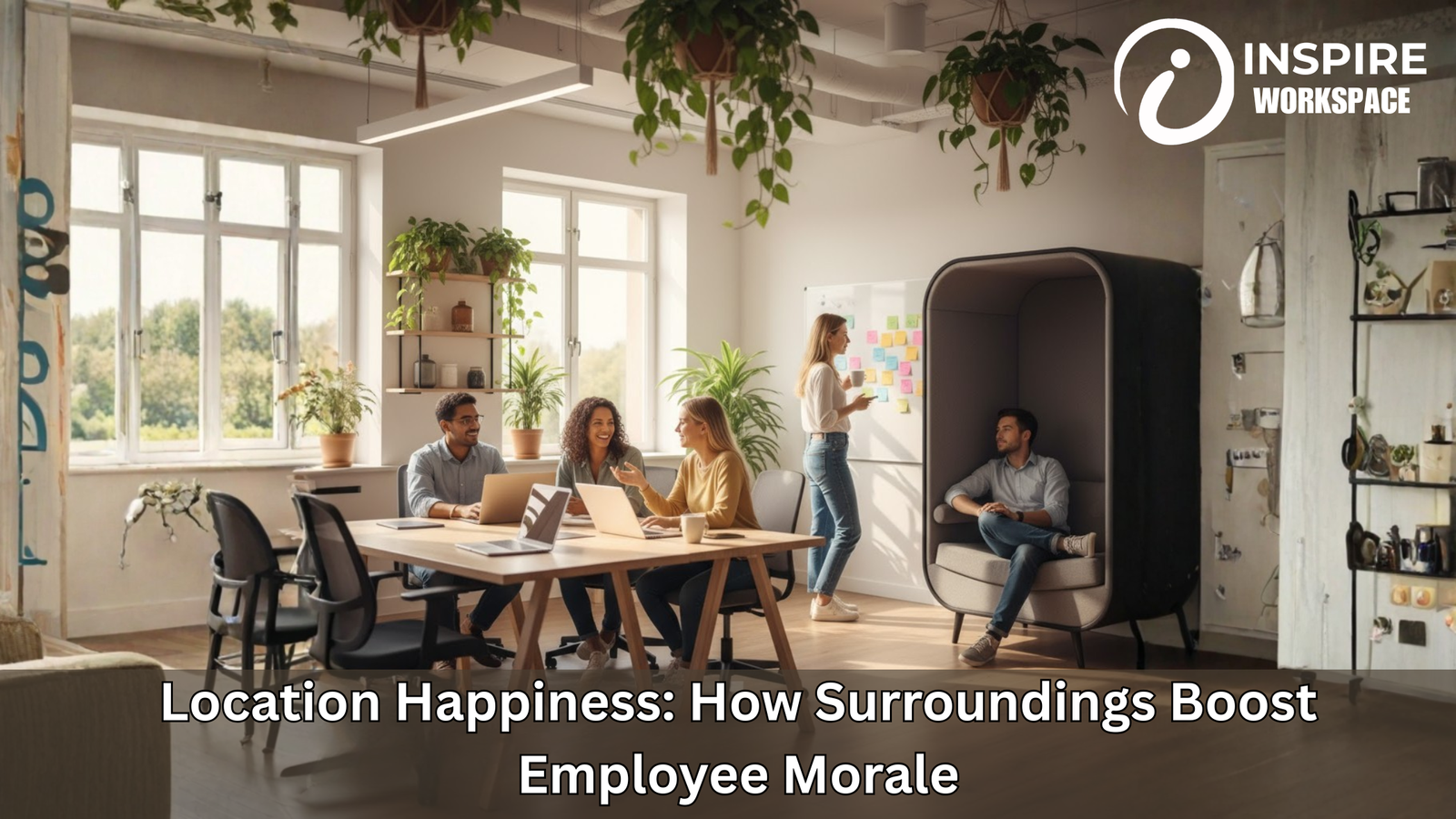Introduction
In today’s fast changing workplace the open door policy has never been more important to creativity and productivity, retention of qualified staff. Organisations spend so much on salaries, benefits and training etc. that we should not underestimate how much our workplace location and the surrounding environment can influence how people feel.
The environment inside of which employees work can have a huge impact on their happiness, ranging from a bustling city center full of cafés and transport links to a peaceful office set in the middle of greenery. A good location does more than just make the journey less grueling; it can foster creativity, encourage collaboration and promote general mental well-being. Let’s figure out more about a better environment leading to happier employees and why “location happiness” is becoming the most important strategy for present-day companies?
Our physical world has a profound influence on our thoughts, feelings and behaviors. Findings from the field of environmental psychology demonstrate that natural light, plants and fresh air can reduce stress levels and improve mood. Employees who experience well-designed offices, in convenient locations tend to feel better energized and more motivated.
Easy access to nature, healthy food and social spaces can turn the daily grind of clocking in and out into something that approaches “an experience” at work. When employees walk outside for lunch or a coffee break and discover a park or lively street, they come back refreshed and that correlates directly with their output.
A drab, isolated environment on the other hand can give rise to fatigue, disengagement and high turnover. So, wise companies now are making sure they select authentic communities that satisfy professional requirements as well as emotional fulfillment.
Location: The Key to Being Happy and Irritable
Even before the workday starts, a long commute can take a lot of energy out of an employee. A number of workplace studies have found that commute time has the greatest unexpected relationship with job satisfaction. Offices located in convenient locations that are easy to reach (near public transportation, major highways or residential neighborhoods) often are home to happier and more punctual employees.
There’s more than just time savings involved in location convenience; it’s also a recognition that you care about employees’ personal lives. When employees are able to navigate work and home more easily, their loyalty naturally increases as does their productivity.
And forward-thinking companies are taking it a step further with hub locations — central spots where not everyone has to live there, but you can hang your hat for the day and work side by side with co-workers from other regions. Some even provide their teams with flexible or co-working spaces near where they live, allowing for the best of both connection and convenience.
Amenity and the environment
Picture yourself walk out of your office and have all the restaurants, gyms, cafes and basic necessities within minutes. In a well established business district, morale can be greatly uplifted by the activity level alone. Staff are likely to feel more appreciated when their environment offers a range of options that meet both professional and personal needs.
Small things, such as proximity to healthy food options, gyms or relaxation areas can boost day-to-day happiness. For younger teams, having a social wriggle space of sorts nearby, both cafes and cultural spots can foster a sense of community or belonging.
Furthermore, corporations that embrace these surroundings in their culture (by having e.g.: team lunches, walking around meetings or outdoor “surf” brain storming) can skyrocket the engagement levels. The space is then more than just background it becomes a catalyst for connection and creativity.
Nature, Design, and Emotional Well-being
“Biophilic design,” or incorporating elements of nature into workplace planning, has taken off for good reason. Workspaces with greenery or natural water bodies and open terraces add to the emotional stability and happiness.
Elements of nature create a stress-free environment and promote better focus. Even a basic view from the window into trees or city life can generate optimism. Indoor plants, natural lighting and fresh air circulation in urban workplaces can help mimic that.
When companies select office-oriented locations that marry natural settings with design functionality, people not only perform better but are proud to work there. It signals that the company values human flourishing over utility alone.
The Social Connection Advantage
A location’s happiness also leads into the social and cultural vibrancy of a place. Developers working in dynamic, multicultural neighborhoods with active community spaces encourage spontaneous collaboration and cross-pollination of ideas.
This has made employees more connected not just to their coworkers, but to the city. They like after work socializing, community events and nearby attractions all the things that make work-life integration feel more hit than miss.
On the other hand, in remote or industrial places teams become to be isolated at work and feel a lack of scalability. That’s why many progressive businesses are moving toward mixed-use spaces places that accommodate business, lifestyle and leisure. Such hubs stimulate casual encounters that spark innovation.
What Location Says About Brand and Culture
The ambiance of an office let’s a company breathe it’s own identity. A new and open workspace in a vibrant area mirrors innovation. A place that emphasizes sustainability or green infrastructure responsibility and environmental consciousness.
People are proud to work for a brand that reflects their own values. When they can say, “I love where I work” figuratively as well as literally, get it? it becomes a potent retention tool. The company culture is not only on a piece of paper or written out as the missionary statement but it’s the air that you breathe, every single day.
Conclusion
“Location Happiness” is a concept for much more than just real estate, and it’s of strategic importance to invest in people. We spend more than one-third of our lives at work and are directly impacted by our surroundings, which can greatly influence mood and productivity and ultimately mental health.
As companies reimagine their workplaces for the post-pandemic future, they need to think beyond desks and décor and begin to see that physical environment as a silent partner in success. It’s more than just where a company is located it’s from there they are cultivated.
After all, happiness is not located inside an office four walls of it or eight. It’s woven into the very things just outside in green views, nearby cafés and a seamless commute that remind employees they belong, are valuable and are right where they need to be.




